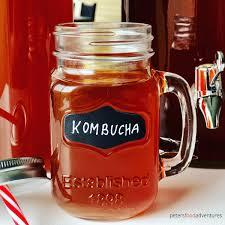
If you’ve wandered into a health food store or perused a trendy café menu recently, you’ve likely encountered kombucha. This fizzy, tangy, and slightly sweet beverage has become a staple for health enthusiasts and curious sippers alike. But kombucha isn’t just a passing trend—it has a rich history and a host of benefits that make it much more than just a pretty bottle on a shelf.
Find Liquid Remedy Kombucha here
The origins of kombucha are as intriguing as its taste. Believed to have originated over 2,000 years ago in Northeast China (then known as Manchuria), kombucha was initially prized for its supposed ability to aid digestion and energize the body. According to legend, it was named after a Korean physician named Dr. Kombu, who introduced the drink to the Japanese Emperor Ingyo around 414 AD. The term “cha” simply means tea in many Asian languages, so “Kombu-cha” translates to “Kombu’s tea.”
Over the centuries, kombucha made its way across Asia, Russia, and eventually Europe, gaining a reputation as a “elixir of life” among its fans. By the early 20th century, it had become a popular homemade remedy in Eastern Europe and Germany, particularly during times of war when other resources were scarce. Fast-forward to the 1990s, and kombucha found its way into American kitchens and health food stores, where it rapidly gained a devoted following.
Kombucha is a fermented tea made by combining brewed tea, sugar, and a symbiotic culture of bacteria and yeast (often called a SCOBY). This SCOBY is the magical organism responsible for fermenting the tea, turning it into the slightly acidic, fizzy drink we know and love.
During fermentation, the sugar is consumed by the yeast, which produces alcohol and carbon dioxide. The bacteria then convert the alcohol into organic acids. The end result? A beverage packed with probiotics, a trace amount of alcohol (usually less than 0.5%), and a delightful effervescence.
While the exact health claims of kombucha can sometimes veer into the mythical, there are several science-backed benefits to drinking this ancient brew:
If you’re new to kombucha, it’s best to start slow. Its tangy flavor and probiotic content can be a bit intense if you’re not used to it. Begin with small servings (about half a cup) and see how your body responds.
Kombucha comes in a dazzling variety of flavors, from classic ginger and lemon to exotic blends like hibiscus rose or turmeric mango. Experiment to find the one that delights your taste buds. And if you’re feeling adventurous, you can even try brewing your own at home—just be sure to follow food safety guidelines to avoid contamination.
Kombucha isn’t just a trendy drink; it’s a beverage with a story, a culture, and a wealth of potential health benefits. Whether you’re sipping it for the probiotics, swapping it for soda, or simply enjoying its fizzy goodness, kombucha offers something for everyone. So, why not grab a bottle (or brew your own) and join the kombucha-loving community? Here’s to a drink that’s as timeless as it is tasty!




